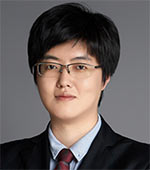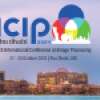SPS Webinar: Lens-Free On-Chip Digital Holographic Microscopy: Resolution Analysis and System Design
Date: 7 April 2023
Time: 9:30 AM ET (New York Time)
Speaker(s): Dr. Chao Zuo
Biography
 Chao Zuo (M’11) received the B.E. and Ph.D. degrees in Optical Engineering from Nanjing University of Science and Technology (NJUST) in 2009 and 2014, respectively. He served as a research assistant at the Centre for Optical and Laser Engineering (COLE), Nanyang Technological University (NTU), Singapore, from 2012 to 2013. In 2014 and 2016, he was exceptionally promoted to associate professor and professor of NJUST, respectively. Now he is the principal investigator of the Smart Computational Imaging Laboratory (SCILab) at NJUST) and is also the founder and director of the Smart Computational Imaging Research Institute of NJUST.
Chao Zuo (M’11) received the B.E. and Ph.D. degrees in Optical Engineering from Nanjing University of Science and Technology (NJUST) in 2009 and 2014, respectively. He served as a research assistant at the Centre for Optical and Laser Engineering (COLE), Nanyang Technological University (NTU), Singapore, from 2012 to 2013. In 2014 and 2016, he was exceptionally promoted to associate professor and professor of NJUST, respectively. Now he is the principal investigator of the Smart Computational Imaging Laboratory (SCILab) at NJUST) and is also the founder and director of the Smart Computational Imaging Research Institute of NJUST.
He has long been engaged in the development of novel Computational Optical Imaging and Measurement technologies, with a focus on Phase Measuring Imaging Metrology such as Holographic Interferometric Microscopy, Noninterferometic Quantitative Phase Imaging (QPI), Fringe Projection Profilometry (FPP), and Structured Illumination Microscopy (SIM). He has authored > 200 peer-reviewed publications in prestigious journals (e.g., Light, Optica, Adv. Photon.) with over 11,000 citations. This research have been featured on journal cover over 20 times and highlighted by Nature, Light. Sci. Appl., SPIE Newsroom, CLP Newsroom, and Optica Image of the Week.
Dr. Zuo is a Clarivate Highly Cited Researcher and a Fellow of SPIE and Optica. He also serves as an Associate Editor of Optics and Lasers in Engineering, Microwave and Optical Technology Letters, and Frontiers in Photonics, and a Topical Editor of PhotoniX, and Photonics. He served as an organizing committee member of more than 60 international conferences and congresses and delivered > 100 plenary/keynote/invited talks. He also served on the Scholarship Committee of SPIE and as the Optica/SPIE Student Chapter Advisor of NJUST.
Abstract
Lens-free on-chip digital holographic microscopy (LFOCDHM) is a computational imaging technique whereby the sample is placed directly onto or very close to the digital sensor and illuminated by a partially coherent source located far above it. However, unlike conventional coherent diffraction-limited imaging systems, where the limiting aperture is used to define the system performance, typical lens-free microscopes only produce compromised imaging resolution that are far below the ideal coherent diffraction limit. In this presentation, we analyze 5 major factors that may contribute to this limitation, namely, the sample-to-sensor distance, spatial and temporal coherence of the illumination, finite size of the equally spaced sensor pixels, and finite extent of the image sub-FOV used for the reconstruction. We will also discuss how to build an LFOCDHM system by optimizing these relevant parameters, achieving both high-resolution and wide field-of-view microscopic imaging with a miniaturized platform.












